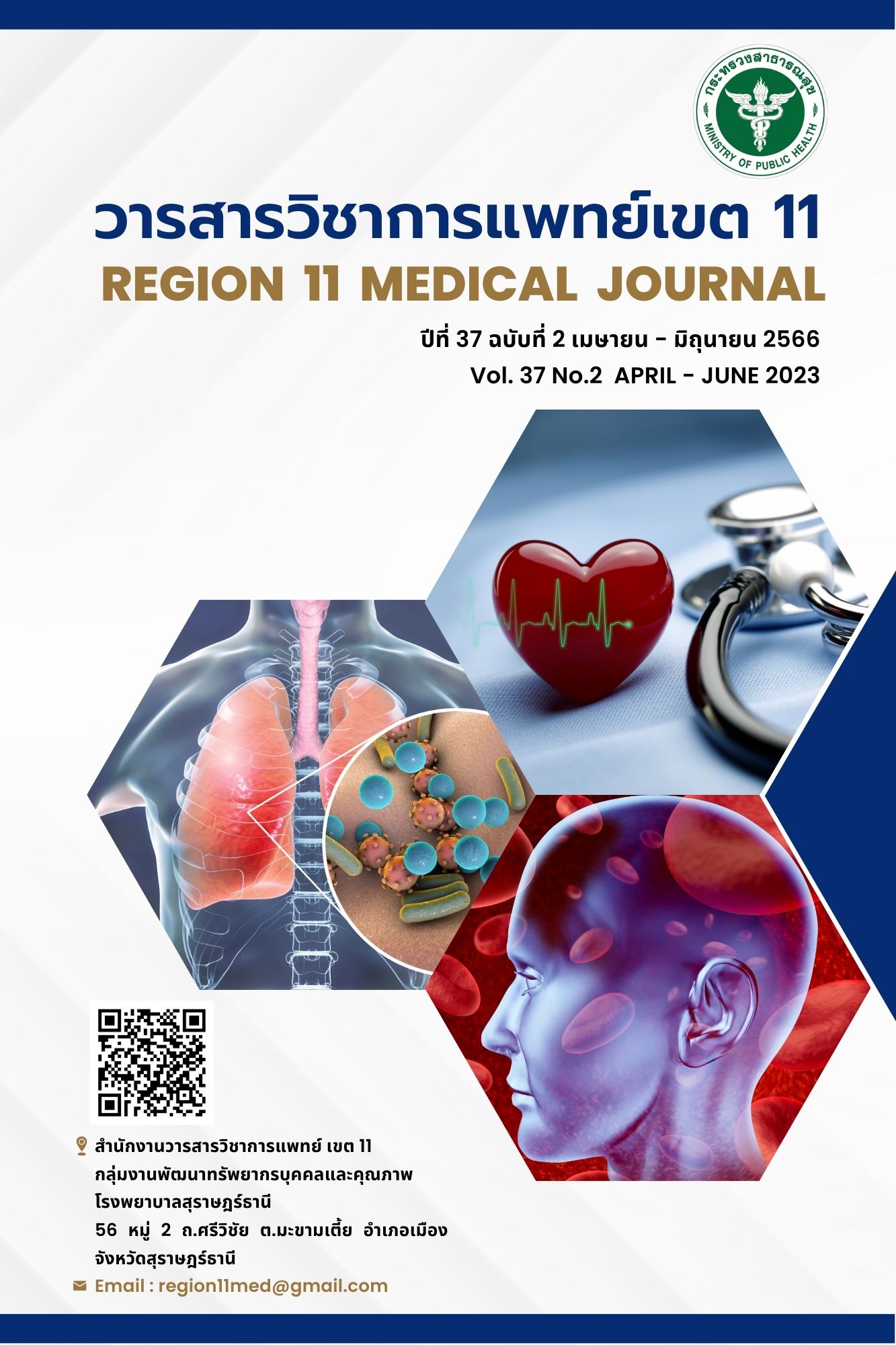The Effect of ultrasonic bone scapel use in degenerative spinal stenosis surgery
Keywords:
spinal stenosis surgery , ultrasonic bone scapelAbstract
Objective : to determine the effect from use of ultrasonic bone scapel instrument in spinal degenerative stenosis surgery in term of perioperative , postoperative Blood loss and total operative time. Compare to conventional surgical technique of spinal degenerative stenosis surgery.
Methods: retrospective cohort study of 45 patients with degenerative spinal stenosis underwent surgery during Jan 2018 – May 2020 By single spinal surgeon (Suppachai Punpichet, MD.) in VachiraPhuket Hospital.
Result : by 22 patients whom underwent the surgery with use of ultrasonic bone scapel in combine with conventional surgery technique (UBS group). The data showed significant Less blood loss in both perioperative and postoperative period (p-value = 0.007) and also had significant less surgical time showed in UBS group (p-value=0.02). However, no device-related complication showed in this study.
Conclusion : The use of ultrasonic bone scapel in combine with conventional surgery technique of spinal stenosis surgery showed benefit in term of less total Blood loss from surgery and also significantly reduce operative time.
References
Bartley, C.E., T.P. Bastrom, and P.O. Newton, Blood Loss Reduction During Surgical Correction of Adolescent Idiopathic Scoliosis Utilizing an Ultrasonic Bone Scalpel. Spine Deform, 2014. 2(4): p. 285-290.
Bertossi, D., et al., Osteotomy in Genioplasty by Piezosurgery. J Craniofac Surg, 2018. 29(8): p. 2156-2159.
Boden, S.D., et al., Abnormal magnetic-resonance scans of the lumbar spine in asymptomatic subjects. A prospective investigation. J Bone Joint Surg Am, 1990. 72(3): p. 403-8.
Chen, Y., et al., Use of Ultrasonic Device in Cervical and Thoracic Laminectomy: a Retrospective Comparative Study and Technical Note. Sci Rep, 2018. 8(1): p. 4006.
Ciol, M.A., et al., An assessment of surgery for spinal stenosis: time trends, geographic variations, complications, and reoperations. J Am Geriatr Soc, 1996. 44(3): p. 285-90.
Hara, M., et al., En bloc laminoplasty performed with threadwire saw. Neurosurgery, 2001. 48(1): p. 235-9.
Hosono, N., et al., Potential risk of thermal damage to cervical nerve roots by a high-speed drill. J Bone Joint Surg Br, 2009. 91(11): p. 1541-4.
Hu, X., D.D. Ohnmeiss, and I.H. Lieberman, Use of an ultrasonic osteotome device in spine surgery: experience from the first 128 patients. Eur Spine J, 2013. 22(12): p. 2845-9.
Onen, M.R., et al., The Reliability of the Ultrasonic Bone Scalpel in Cervical Spondylotic Myelopathy: A Comparative Study of 46 Patients. World Neurosurg, 2015. 84(6): p. 1962-7.
Parmar, D., et al., Cutting characteristics of ultrasonic surgical instruments. Clin Oral Implants Res, 2011. 22(12): p. 1385-90.
Romeo, U., et al., Bone damage induced by different cutting instruments--an in vitro study. Braz Dent J, 2009. 20(2): p. 162-8.
Sanborn, M.R., et al., Safety and efficacy of a novel ultrasonic osteotome device in an ovine model. J Clin Neurosci, 2011. 18(11): p. 1528-33.
Scarano, A., et al., Ultrasonic vs Drill Implant Site Preparation: Post-Operative Pain Measurement Through VAS, Swelling and Crestal Bone Remodeling: A Randomized Clinical Study. Materials (Basel), 2018. 11(12).
Wahlquist, S., S. Nelson, and P. Glivar, Effect of the Ultrasonic Bone Scalpel on Blood Loss During Pediatric Spinal Deformity Correction Surgery. Spine Deform, 2019. 7(4): p. 582-587.
Downloads
Published
How to Cite
Issue
Section
License
Copyright (c) 2023 Region11Medical Journal

This work is licensed under a Creative Commons Attribution-NonCommercial-NoDerivatives 4.0 International License.






